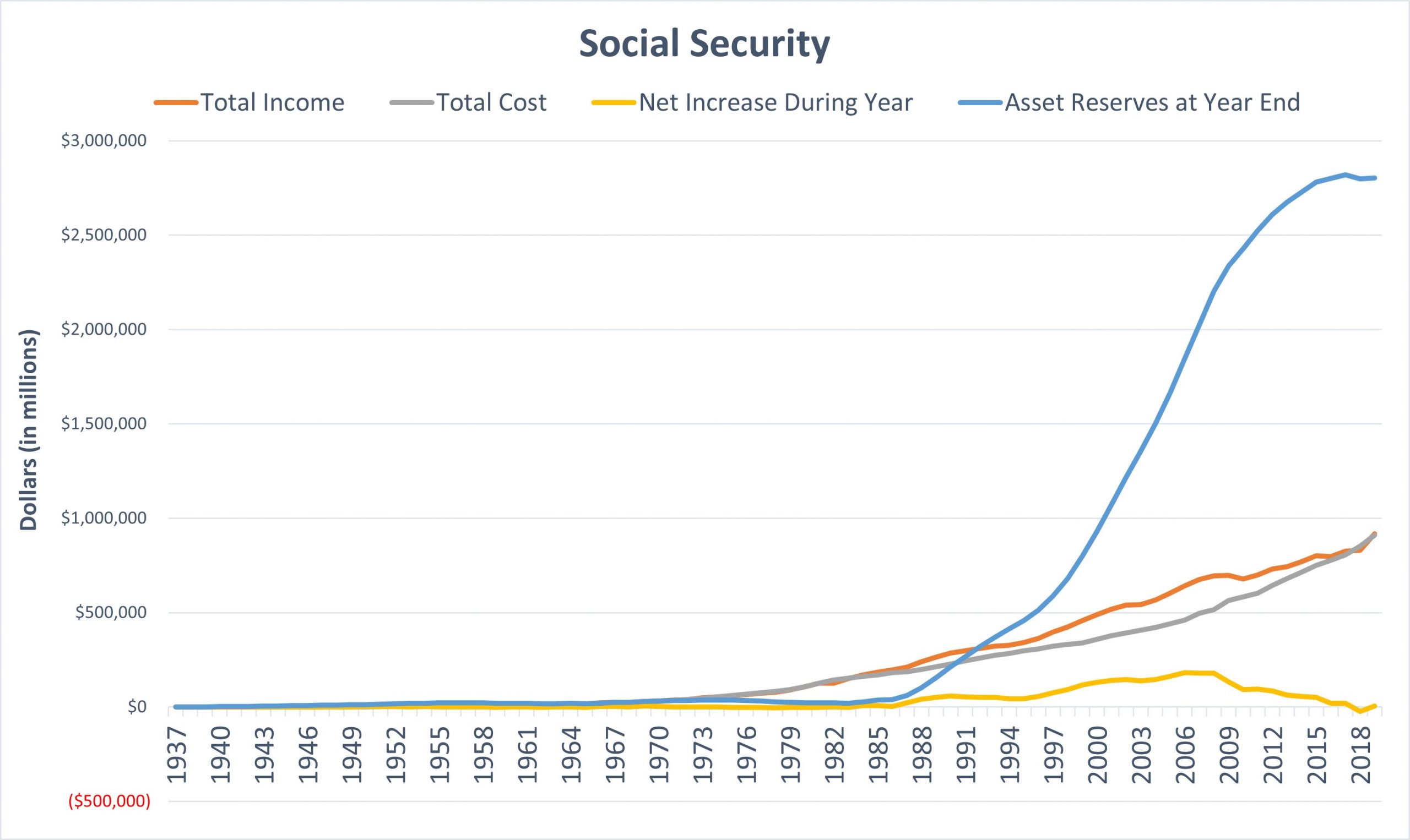How to Plan for Social Security?
Blog post
11/05/20One question we receive quite often from clients is how to plan for Social Security benefits. For many people, both young and old, this is a big question when considering their future. Based on recent projections from the Social Security Board of Trustees’, the Social Security trust funds are due to run out by 2035. Below is a chart from data on the Social Security website showing that in 2018, the trust fund assets, as represented by the blue line, decreased for the first time. As more baby boomers retire, this trend will likely continue.

Eventually the government will have to implement some austerity measures to fix the problem. Until then, financial planners need to consider multiple scenarios when running financial plans for clients’ Social Security benefits. There are three scenarios we run with our clients when preparing a financial plan.
Scenario 1:
The first scenario is the government continues to kick the can down the road. This topic is a politically charged one and many politicians are afraid to deal with it because there are no good answers. If that continues, the government eventually will have to monetize the debt. This would instantly increase the money supply, but it would solve the problem. Even though this ‘solution’ would solve the Social Security deficits, it would most certainly cause inflation.
In the debt monetization scenario, if you were expecting to receive $2,000 per month at full retirement age, that wouldn’t change. The change is what would that $2,000 buy you in the future? In this scenario, we increase the inflation rate for costs for clients and we lower the cost of living adjustment for Social Security. Even if Social Security grows 1% less than inflation over time, it makes a massive difference in one’s financial plan.
Scenario 2:
The second scenario is one in which the government acts and makes changes to Social Security. One of the easiest changes to make is to extend full retirement age from where it is today (between ages 65-67). Based on that scenario, we start our client’s retirement benefits at a later age and make proper adjustments for finding income between the age they retire and the age they receive Social Security benefits.
Scenario 3:
The third and final scenario is simply decreasing benefits by a certain percentage. The government could decide the best result overall is to simply lower benefits for everyone.
In the end, no one has a perfect answer for the future of Social Security benefits because no one knows what is going to happen. However, with proper planning early in your life, you can make sure you are in a proper position at retirement no matter what happens. As the popular saying goes, “Plan for the worst and hope for the best”.